White climbing roses: varieties and their cultivation

White climbing rose is an excellent solution for landscape design. These flowers look perfect against the background of dense green foliage and go well with almost any other plant. Currently, quite a few varieties of white climbing roses with unusual names have been bred. Each is different in appearance and cultivation characteristics. Below are the most popular options.
Peculiarities
Climbing roses are divided into two types: climbers and ramblers. Climbers are varieties that re-bloom. Also, the differences are strong, stable stems 2-5 meters long and large buds. These varieties must be tied to a support or directed in the right direction due to their erect shape.
Rambler have more flexible stems from 5 to 10 meters in height. When growing a variety of this type, the plant only needs to be directed in the right direction, then the shoots themselves will begin to make their way, clinging to everything that comes along the way. It is a once-flowering variety.
But although ramblers bloom only once a summer, they bloom for quite a long time and quite abundantly. More suitable for decorating arches and pergolas.
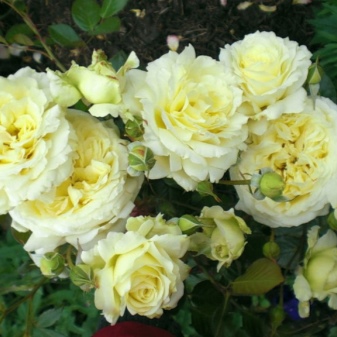
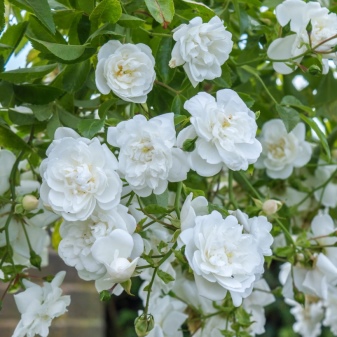
White roses look beautiful in any garden. Especially often gardeners organize compositions of white roses and roses of a different color. Delicate white buds are in good harmony with red, orange, blue, dark varieties of roses. Beautiful combinations are obtained from white roses with peach, purple, lilac flowers. When choosing a variety, it should be borne in mind that although some of them are called white, they may not have a purely snow-white color, but differ in other shades - peach, pink, yellow. During flowering, the additional color often disappears and the roses acquire perfectly white petals.
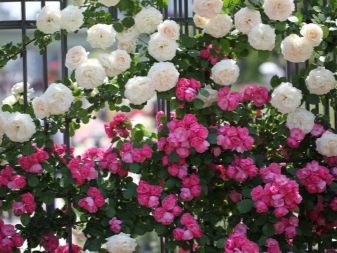
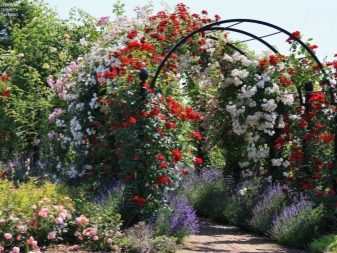
How to choose a variety?
If a novice gardener decided to plant white climbing roses on the site, then he should abandon complex varieties that require a lot of attention and care. Therefore, when choosing a variety, pay attention to the following points:
- choose varieties that easily tolerate difficult climatic conditions, for example, frost-resistant varieties (Iceberg Cl., Ilse Krohn Superior, Guirlande dAmour);
- give preference to options that are immune to the most common ailments (Colonial White, Hella, Alaska);
- it is better to buy climbers, they will be able to please with flowering several times over the summer (Mrs. Herbert Stevens, "Iceberg Climing", "Madame Alfred Carrier");
- choose a variety with thornless shoots and small thorns, otherwise caring for the rose will turn into a real torture and struggle for the safety of the skin of the hands (Alberic Barbier);
- for novice gardeners, it is recommended to give preference to self-cleaning white roses, they themselves shed faded buds and do not need regular pruning;
- check the description on the package with the seedlings, it may indicate if the rose is suitable for growing in a particular climate.
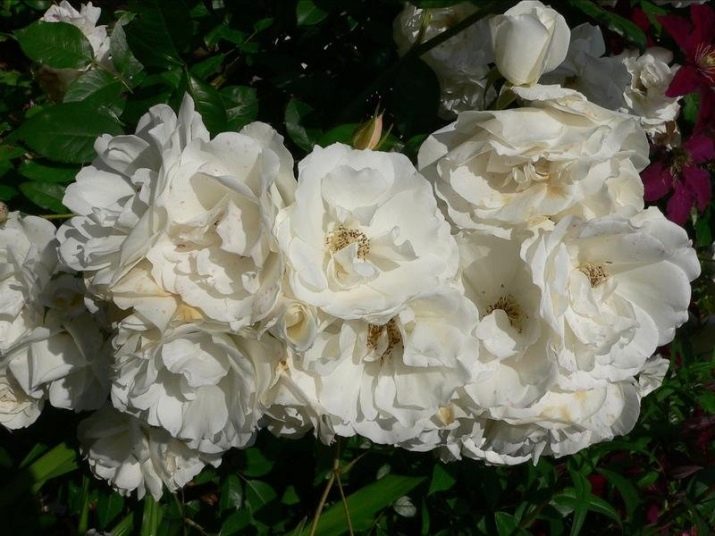
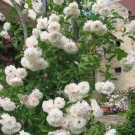
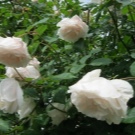
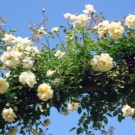


Varieties
Blanc Meidiland
The buds of the variety have 60-70 white petals with a pinkish edge. The flowers have no smell, they are medium in size, collected in inflorescences of 5-10 pieces. The leaves are dark green in color, their structure resembles a gloss. Stems are dense, tough, there are many light thorns.The bush is spreading, its height is up to 140 cm.
The advantages of the variety are frost resistance and long flowering. Well suited for growing on a lawn or in a container, can be used as a ground cover. Also, the advantages include resistance to diseases such as black spot and powdery mildew. The best soil for growing is black soil or loam. When planting, it is required to feed the culture with organic matter.
It is recommended to choose a sunny area, but if the variety is planted in the southern regions, then this should be a ventilated place so that the petals do not get burned.
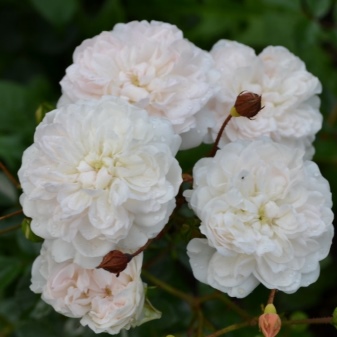
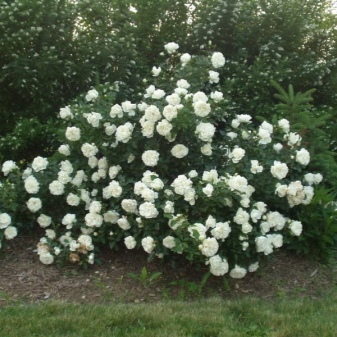
"Cockade"
These are snow-white buds. Terry petals, long, flowers develop in inflorescences of 8-10 pieces. The bush is lush, its height can reach 3 meters, the plant can be up to 2 meters wide. The leaves are green or dark green in color with jagged edges, which looks very aesthetically pleasing in combination with dazzling white flowers. Flowering begins in June. Flowering is quite abundant, not interrupted until frost.
The advantages are also frost resistance and resistance to major diseases. When growing, you should choose a well-lit place, as the plant loves light.
Great for planting on retaining walls and supports. A distinctive feature is a very rich aroma.
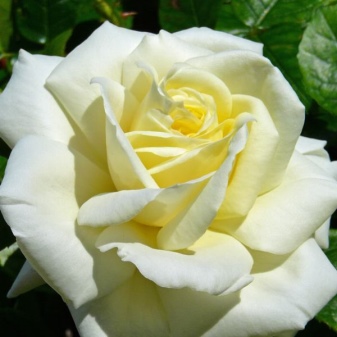
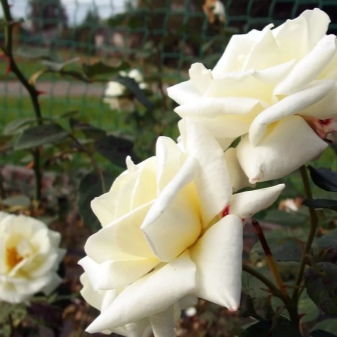
"Iceberg"
The flowers have a classic white color with a yellowish or milky core; on cold days, the petals can have a pinkish tint. The structure is semi-double, the diameter of one bud is 9 cm, each peduncle includes 2-3 flowers. The bush can reach a height of 1.5 meters. Refers to climbers.
This variety is very popular because of its beautiful appearance, however, it has a big disadvantage - demanding care. The variety is picky about the soil, prefers light drained soil saturated with humus. Does not like wind and grows well in the sun. Needs moderate watering.
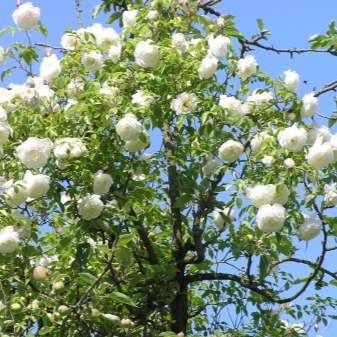
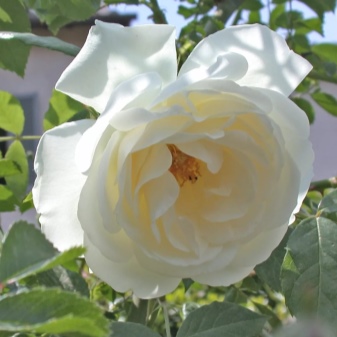
"Elf"
The scourge of the bush is 3 meters long, and the bush reaches 2.5 meters in height. One brush includes five terry white buds with a greenish tint. The aroma is pleasant, but very delicate and subtle. Of the advantages, it should be noted resistance to pathogens of powdery mildew and black spot. The disadvantages include poor resistance to precipitation and wind. The petals are not tightly connected, so falling drops of rain or strong gusts of wind threaten the destruction of the flower. Drops that have penetrated inside can provoke fungal ailments. In addition, the variety cannot be called frost-resistant; it requires high-quality shelter for the winter.
Despite these disadvantages, "Elf" is quite popular in the northwestern regions of the country. Gardeners are attracted by abundant long-term continuous flowering, picky about the soil and a very beautiful appearance.
The plant is often decorated with mixborders, balconies, columns, arches and trellises. Often planted next to a red climbing rose, this combination becomes the main decoration of the garden.

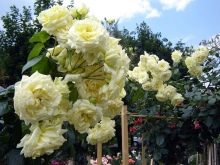

Rambler Rector
The buds of this variety are characterized by a medium-sized size (up to 4 cm in diameter) and a beautiful white color with a cream shade with bright yellow stamens, the texture of the petals is semi-double. Each brush has 15 flowers. In diameter, the bush can grow by 2 meters, the length of the lashes can reach 5 meters.
The variety has excellent frost resistance, therefore it is suitable for planting in the middle, western and central regions of Russia.
Differs in a rather strong immunity to frequent diseases, but still needs the prevention of fungal diseases, especially in conditions of high humidity. Used to decorate fences and hedges, arches and gazebos.
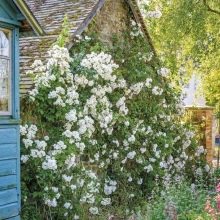
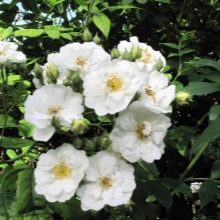
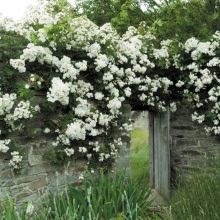
"Nemo"
Flowers of the variety are distinguished by an amazing "appearance": the petals are white, and a large number of stamens are decorated with yellow anthers. The buds themselves are small - up to 4 cm in diameter. Bushes are wide, spreading, low - up to 1 meter.Shoots are quite branched, nicely sloped, covered with glossy bright green leaves. Inflorescences have 5-10 flowers. The variety belongs to the re-flowering varieties. It is characterized by abundant and very long flowering. Possesses high resistance to fungal diseases, perfectly withstands both a dry period and an abundance of rains.
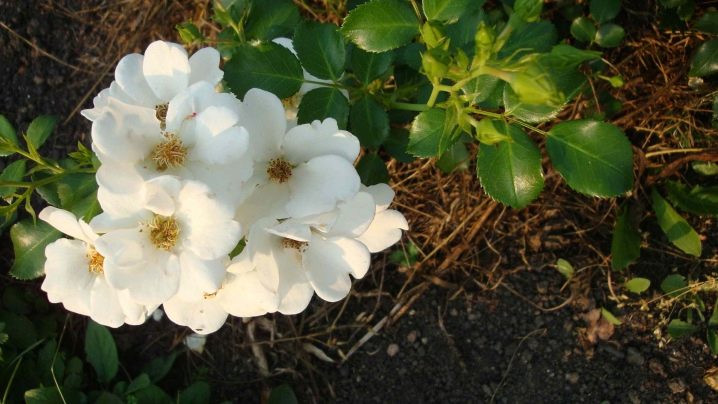
Diseases
Powdery mildew and black spot are the most common diseases of climbing roses. These diseases can affect a plant even with strong immunity, so preventive measures will never be superfluous. It is also important to notice the development of the disease in time. Powdery mildew usually begins in August, when the atmosphere is filled with high humidity, and there is also a sharp temperature drop. Signs of the disease are white spots on the leaf plate, covered with a mealy bloom. Gradually, the leaves curl and crumble.
Spraying with Strobi diluted with water in proportions of 3 g: 10 liters, respectively, will help to save the culture. With the active development of the disease, treatment with the drug "Tiovit Jet" is suitable.

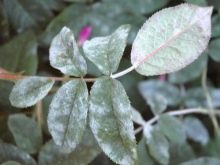
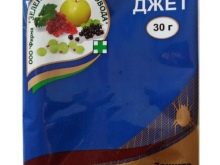
Black spot occurs under the influence of excessive humidity and low temperature with a deficiency of potassium. You can recognize the disease by black and brown spots on the leaves. Over time, the leaves turn yellow and fall off. The fight against the disease is carried out with the help of the drugs "Ridomil Gold", "Mancozeb", "Bravo". For prophylaxis, it is necessary to regularly carry out sanitary pruning, exclude irrigation with cold water, normalize the irrigation regime, spray roses with Oxyhom, Cuprolux, Bordeaux liquid in autumn and spring, feed them with potassium-containing fertilizers, burn fallen leaves affected by the disease.

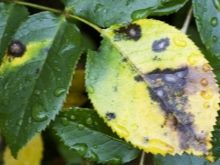
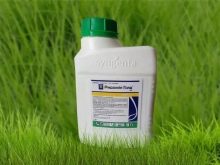
Pests
The main pests that love to feast on roses include the following insects.
- Rosewood sawfly. Under the influence of the postponed hungry larvae, the leaves dry up and fall off. The insect is fought with a solution of "Fufanon", "Karbofos" or "Iskra". An infusion of tobacco (400 g per bucket of water) and green soap (40 g) is also suitable for processing.
- Rose cicada. It sucks out cell sap, which is why the leaf plate becomes covered with marble spots, the leaves dry out and fly around. The same methods of struggle are suitable as for the attack of the rose sawfly.
- Green rose aphid. Hibernating larvae destroy buds and leaves in spring, an adult feeds on plant sap. To combat, you can use the above drugs or a soap solution (300 g of soap per bucket of water). Processing is carried out before flowering or after the first wave.

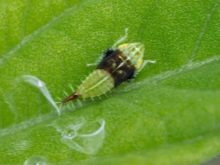
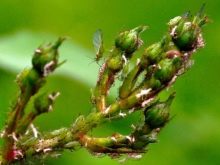
For the intricacies of planting white climbing roses, see below.

































































































The comment was sent successfully.